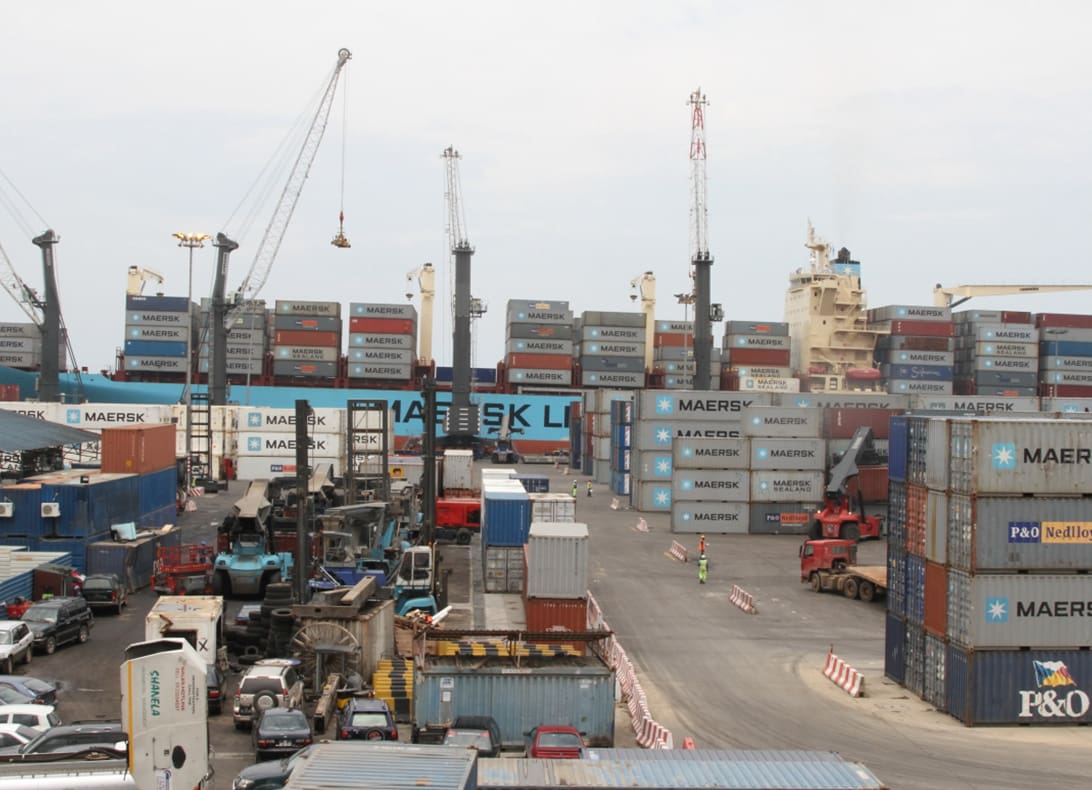
Angola: The Revitalisation and Expansion of Luanda Port
A visit to a struggling port
I first visited Luanda port sometime in the early 1990’s. The director-general of the ports authority agreed to show me the port installations provided that we could use my vehicle and driver explaining that the port authority was short of vehicles due to maintenance issues.
We were driving between rows of shipping containers when he suddenly and loudly ordered my driver to stop the car. A few metres ahead, three young men were pulling on something that could have been a crowbar. They had wedged the end of it into a large lock on the container door. The director-general sighed, swore softly, opened his passenger door and stepped out. Then he walked towards the men, shouting obscenities. The apparent thieves’ reaction was surprising. They stared at the approaching official, then sidled slowly away and disappeared somewhere in the maze of containers. The director-general returned to the car muttering that theft was a major problem for the port, and that if he had his way, he would shoot the bastards.

The early 1990s. Strange and difficult times in Luanda
In early 1992, the Angolan civil war had abated but there were no commercial flights between Johannesburg and Luanda. A group of clients and I flew into the Angolan capital in a hired 16-seater aircraft. From the air, the city resembled a massive shanty town. We wondered how we (as mainly South Africans and first time visitors) would be welcomed in a country ravaged by a war in which our own military forces had played a major part combating its government. But we were pleasantly surprised. We were well received at all our meetings. Our Angolan hosts displayed a reasonableness and maturity in referring to future cooperation and development rather than dwelling on the then recent conflict.
The war had driven much of the rural population into the cities. The result was chaotic urban growth, especially in Luanda. At the time of independence in 1975, the city had only about 500 000 inhabitants. In 2002, this number grew to over 3,2 million. Swathes of slums and squatter settlements quickly developed between office buildings, hotels and old Portuguese-style dwellings. A large slum grew rapidly on the peninsula opposite Luanda’s famous historic marginal or bay line where some of the city’s best (and very expensive) restaurants were located.
Another consequence of the major population influx was the development of large informal outdoor markets. Newcomers (mainly from the north) arrived with a strong historical tradition of informal trading. The MPLA government’s attempts to establish a centralised market economy met limited success, and much of the population found that their needs were met through the informal economy. The huge Roque Santeiro informal market, comprising thousands of tin-roofed stalls, developed next to the port. Just about anything could be bought there, from clothes to computers to food. A mountain of much high-quality waste such as cans and bottles, developed at the entrance to the peninsula.
I was staying at the multi-floor Meridien Presidente Hotel, situated a short distance from the port entrance. My room was on one of the top floors. I was woken in the early morning by a series of gun shots coming from the port area. When I descended later to the breakfast area, I asked one of the chefs about the night disturbance. His replied that there was much pilferage at the port, and that the “only language” the thieves understood was a warning shot. He added that many of stolen items were taken “over the wall” to be sold in the Roque Santeiro market. (I was uncertain of the accuracy of his account, but it made for an interesting anecdote.)

Gradual development and revitalisation of Luanda port
Gradual improvements and Luanda port’s revitalisation are well recorded in extracts from my previous Luanda visit reports, as well as a more recent news report.
1992: The port is in a very poor state with a huge container backlog and only a few of the 41 cranes working. Terminals have recently been subdivided and allocated to freight companies.
2002: Luanda port has improved, although the container terminal is not working well. Imports have doubles and It is saturated with containers. Pre-shipment inspection contracts have been awarded. The new Documento Unico has helped reduce the bureaucracy. The situation is likely to improve as reforms are undertaken.
2008: The port of Luanda is experiencing a serious congestion problem. Nevertheless, improvements are taking place. Two more quays will be constructed and there are plans for a new terminal that will have four quays. Dredging is underway as are plans for further development of the Viana dry port.
A 2016 report in the Maritime Transport Review listed the port of Luanda as showing the biggest improvement in productivity for developing countries.
The development of the port of Barra do Dande (situated 30 kilometres north of Luanda) is alleviating Luanda port’s much-mentioned congestion problem. In 2021, the first stone was laid for the construction of an ocean terminal there. The new port will specialise in petroleum products. The US$ 500 million project comprises two berths, a pipeline network, and 29 storage tanks.

And now, a major port expansion project
In April 2024, the Luanda Port Authority and AD Ports Group of Abu Dhabi in collaboration with local transport companies, concluded a US$ 380 million, 20-year concession agreement for the upgrade and modernisation of Luanda port. The project includes upgrading the multi-purpose port terminal, expanding the container and ro-ro terminals, increasing the size of the concession area, upgrading the quay walls, and procuring additional cranes and modern IT systems, and dredging equipment for a deeper draft.
The objective is to increase Luanda port’s container capacity from 25 000 TEUs to 350 000 between 2024 and 2026. Ro-ro volumes will be increased to over 40 000 vehicles.
The port could soon rise in prominence as a major hub for trade in central-west Africa.

